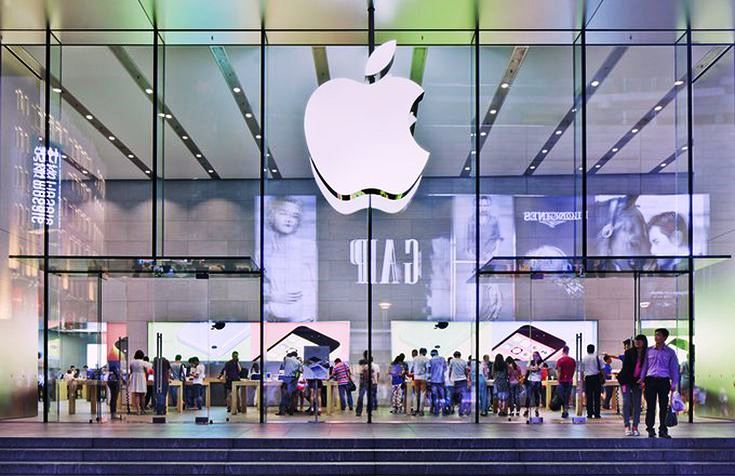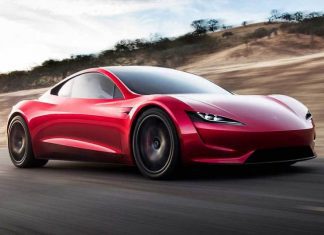Probably. But we hope not. Since Apple Computers Inc. was founded in 1976, it has been on everyone’s radar. They have lured customers continuously with their elegant designs and smooth user interface. Despite the ups and downs over the decades, they have had a loyal fan base. But in the booming tech industry of 2020, is brand loyalty enough for Apple?
Apple Revolutionized the Tech Industry
Apple has always competed with itself. Every time they launched a new product, it beat one of their own. Since it released the first Macintosh in 1984, their goal has been innovation. Apple’s Newton MessagePad was a PDA (personal digital assistant) with handwriting recognition – a technology many companies are still struggling with today.
Mac – In 1989, after three updated versions, Apple released the first laptop, Macintosh Portable. Then in 1991, came the Powerbook 100. The modern iMac computer came out in 1998. The colorful bulky monitors were soon replaced by the slim, simplistic style of Apple with the iMac G4 in 2002.
With the release of the iBook G3 in 1999 and then replacing it with MacBook in 2006, Apple brought a whole new range of laptops. Their successful advertising campaigns were a great contribution to the success as well. Then in 2008, Steve Jobs introduced the first Macbook Air and took the world by awe.
iPod – Released in 2001, this device also introduced iTunes. This elegant device was a dream for music lovers – adults and teenagers alike. They continued to make it smaller with larger internal storage with iPod Mini and then iPod Nano. 2007 saw the advent of iPod Touch, and then it somehow got lost in the background.
iPhone – Despite everything the brand has done, this is still their most successful product. The first iPhone came out in 2007, followed by iPhone 3G and 3GS in the next couple of years. With the iPhone 4 in 2010, the brand found its iconic design, and from there, it only got better. In 2012 came the iPhone 5, followed by iPhone 5S in the next year.
After the iPhone 6 and 6 Plus entered the market in 2014, it was all about bigger screens or better cameras. The removal of the headphone jack from the iPhone 7 was met with a lot of criticism. Since then, other than a very surprising iPhone SE in 2016, every new model is just a slightly updated version of the previous.
iPad – Apple entered the tablet industry in 2010 with the iPad. IPad 3 and 4 both came later in 2012 after the death of Jobs. In the same year, we also saw iPad Mini, and then iPad Air was released the following year. In 2014, both of their updated models were brought to the market. iPad Pro and Apple Pencil came in 2015 and gave iPads a whole new identity as drawing tablets.
Apple has several other products and accessories that are still growing, like iCloud, Apple TV, Apple Watch series, etc. However, none of these are the company’s primary focus, and it is hard to say how far they will take it.
What Changed?
Steve Jobs passed away. But contrary to popular belief, that was not the sole reason for the brand’s downfall (if you can call it that). Although Jobs left Apple in 1981, they had realized the company couldn’t go far without him. The man left and rejoined three times to take his creations as far as possible.
Even after he died in 2011, when Tim Cook took over as CEO, Apple went on to become a trillion-dollar company. In 2018, when the stock prices drastically fell, the executives found a way to take the focus away from the fact that sales were going down. They claimed that Apple had a more diversified revenue base and refused to disclose sales data to its investors.
Even with a lower market share, Apple has managed to grow in the past decade, mostly due to brand loyalty and diversifying their services rather than innovation. In 2019, Cook told his investors that iPhone sales were expected to be lower than their predictions, and this created serious concerns.
iOS Versus Android
Apple products have always come at a premium price. Unlike Android or other manufacturers, their prices don’t easily fall even when newer models are out. Google has played a well-planned strategy to push Android so far in the industry:
- Android is an open market where other manufacturers can use the OS for their devices. This gave them a large ready-made share of the market.
- In their latest versions, both Android and iOS have introduced similar features, for example, Dark Mode. Although they are still sticking to their distinctive layouts, there is little difference in features anymore. You can see how quickly Google caught up.
- Android gives you the option of both premium and budget pricing. Apple products are priced high, and it was an investment people. They were willing to make for the premium experience. But Android manages to provide the same for less now.
- Google Assistant is receiving constant upgrades, whereas Siri seems to have been left behind.
- Samsung, introducing innovations like the folding phone, also works in Android’s favor. This is something that Apple has not reached.
What does the future look like?
It will be different from what anyone could have predicted. Even though iPhones are not as popular as they used to be, the new iPads look promising. Although the iPad Mini costs around $400, even the best tablet under $200 is no match for it. So budget devices don’t have a lot of scopes here. Even then, there are Samsung Galaxy tabs, Microsoft Surface range, and several other competitors to compete with.
Google is becoming stronger competition every day. If you go back a few years, when Apple released iOS 5 in 2011, the Android 4.0 Ice cream Sandwich was the opponent. This was not even fair competition, because Apple was already ahead in the game. But in 2020, if you compare iOS 13 versus Android 10, you would be impressed at how rapidly Google has developed its software. You can tell Apple could not keep up the pace.
Final thoughts:
Despite the strong competition it faced from Microsoft in the PC industry and then Android in the smartphone industry, the brand emerged victorious with its Macbook Air, iPad Pro, and iPhone 11. Apple is far from fading away, but the growing competition does pose a threat.
There was a time when Apple was the first company to do things differently and introduce more advanced products. Even if they manage to pull through with Macbooks and iPads, it’s hard to say if iPhones will have the same appeal anymore.








